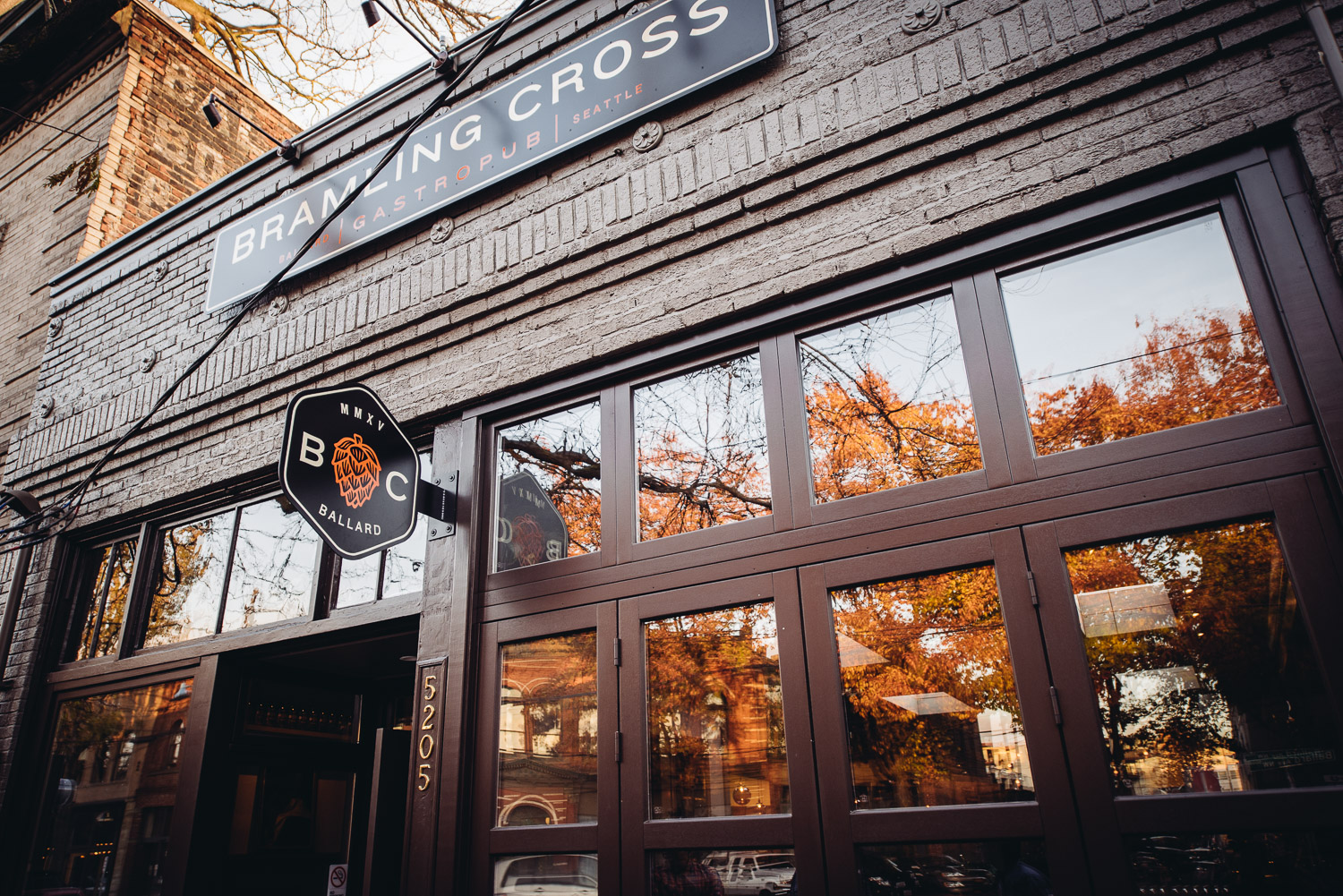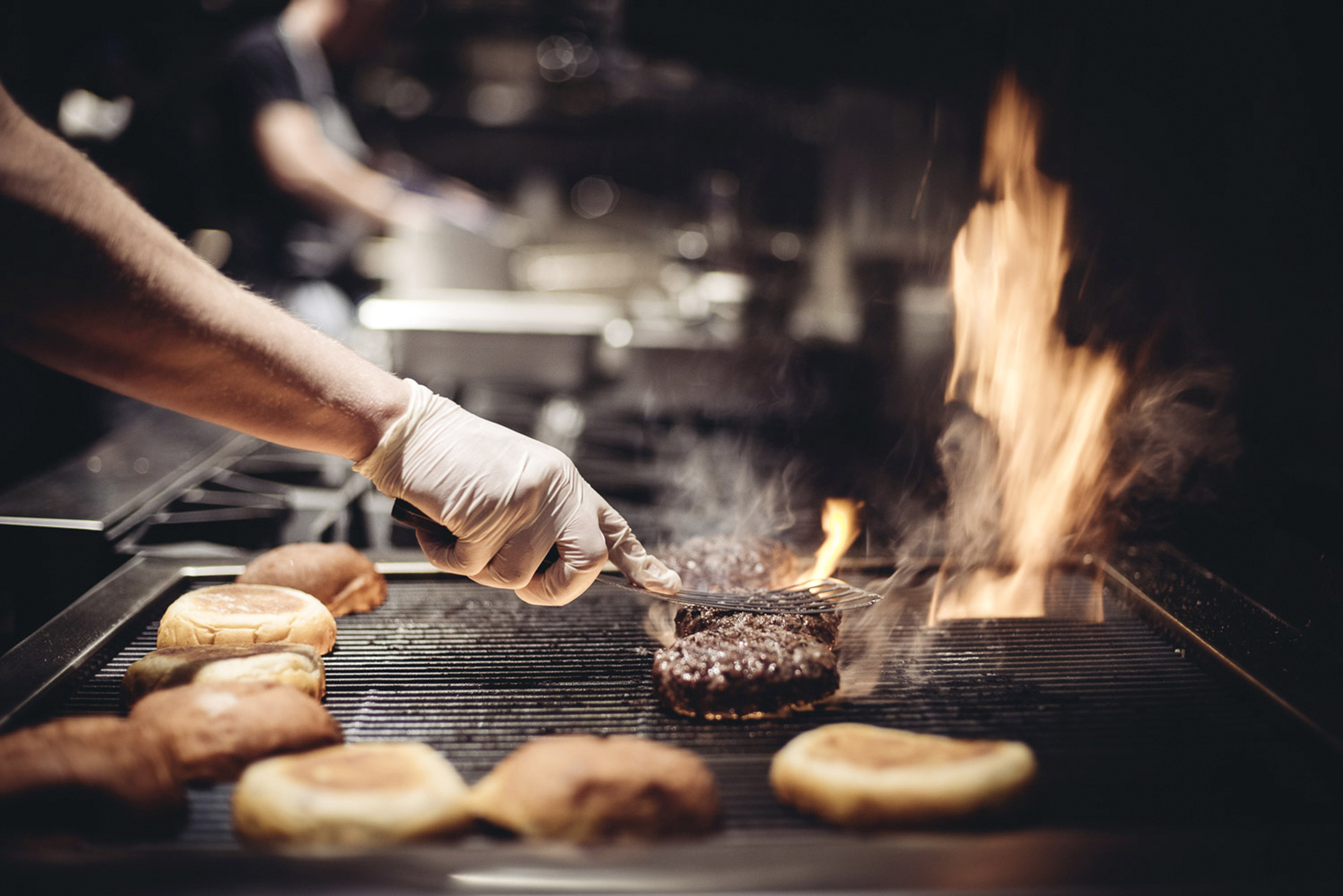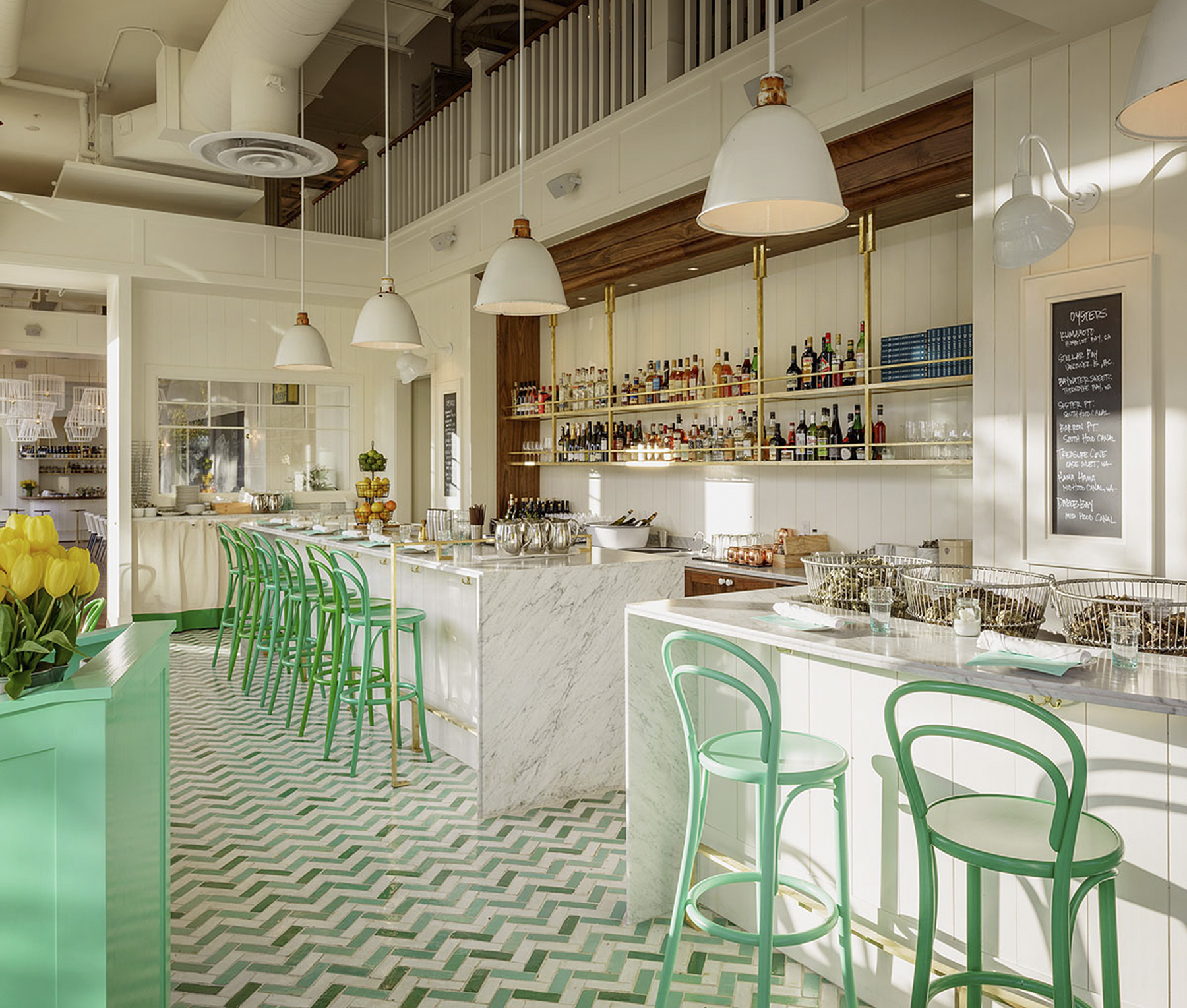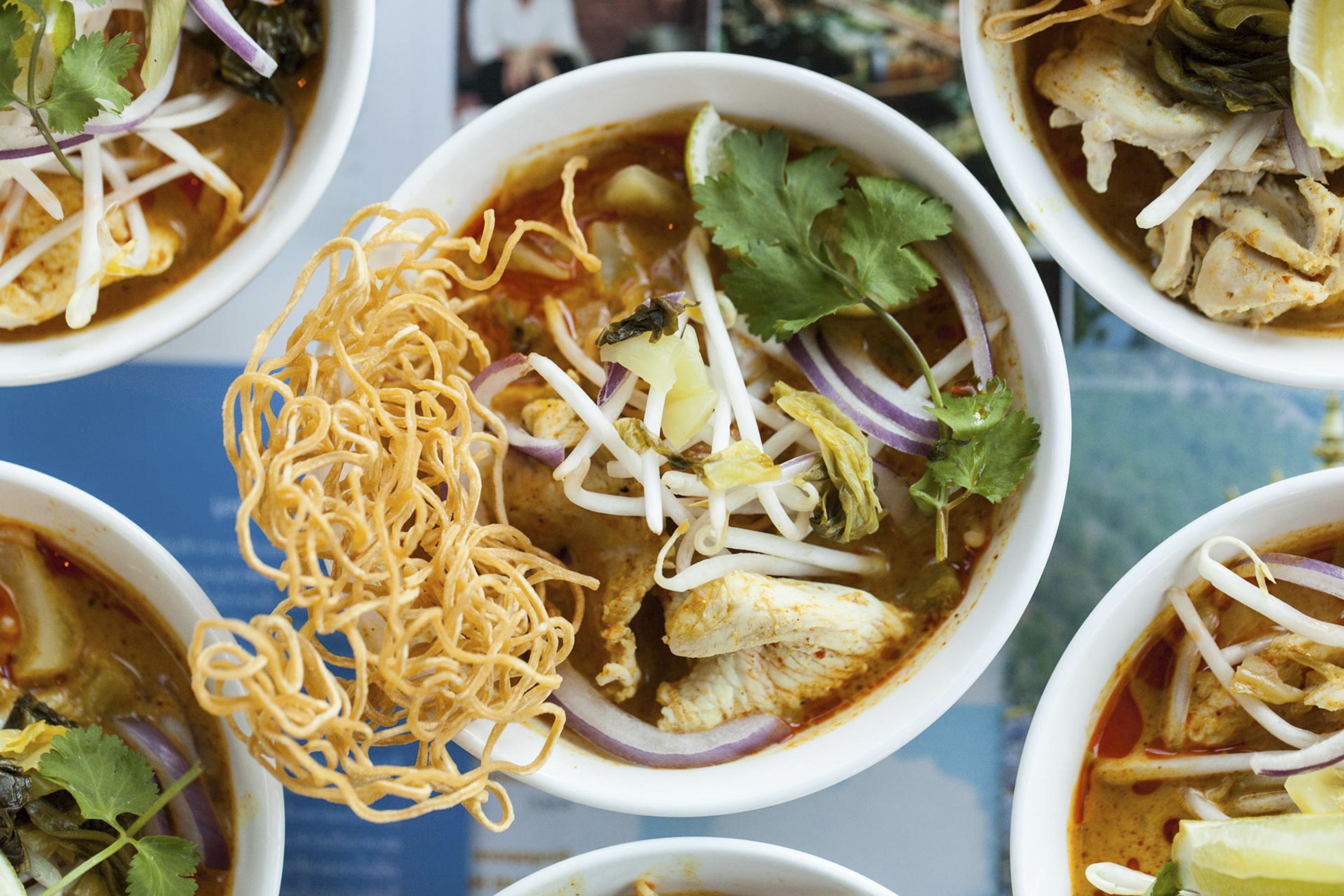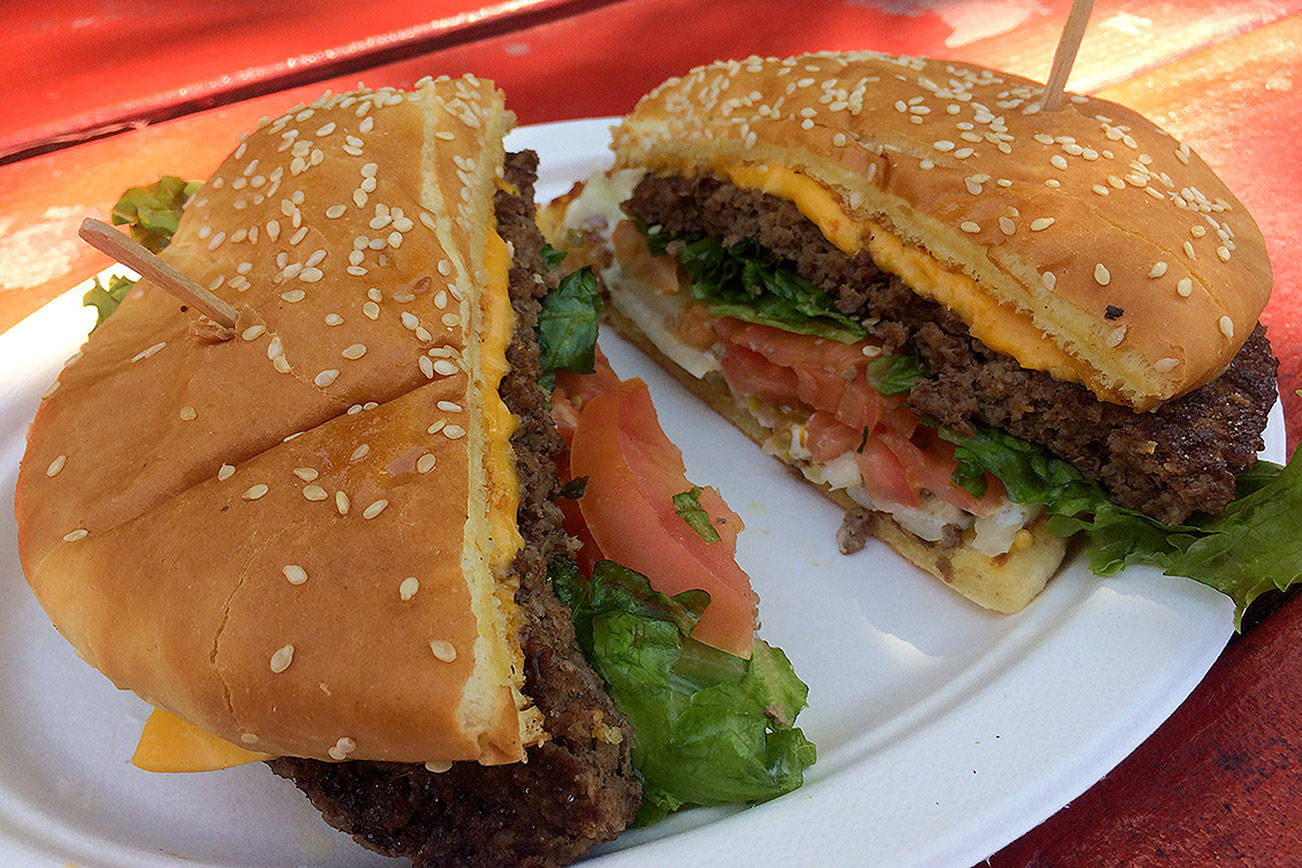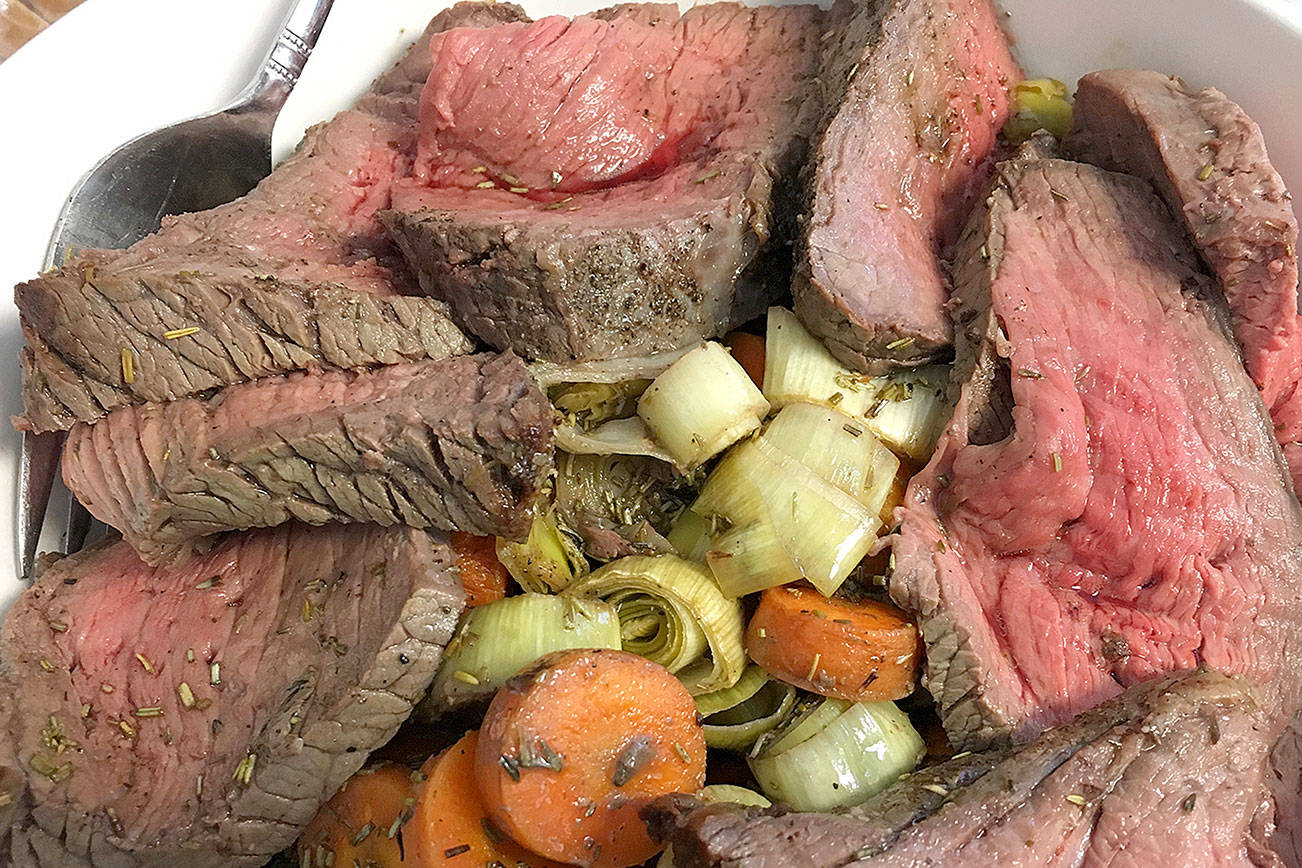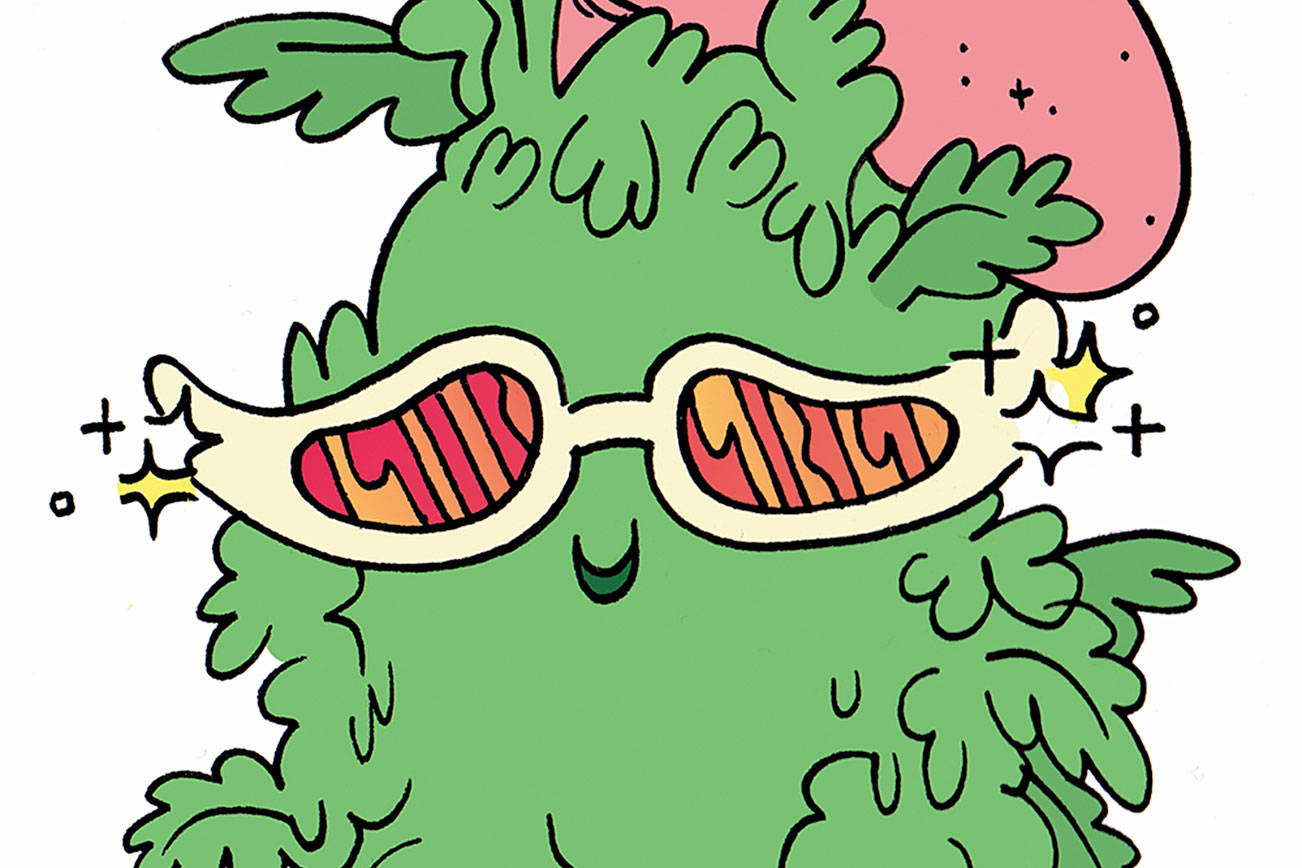A few weekends ago I ferried over to San Juan Island with some other food journalists to experience (gratis) the “Gourmet Glamping” series that the Lakedale Resort is hosting throughout this summer. In case you haven’t heard, glamping is the latest portmanteaued activity, mixing “glamour” and “camping.” In this case, we slept in large canvas “tents” with queen-size beds and luxe hotel-style furnishings. Before bedtime, we gathered by the lake and helped Kyle Nicholson—former chef at the Friday Harbor House and the new chef of the island’s beloved Duck Soup Inn—prep and cook an entire meal over firepits. Not burgers and hot dogs, mind you, but flank steak with chimichurri sauce and Vietnamese crepes with spot prawns and pork shoulder, all paired with wines from Walla Walla’s Bergevin Lane Vineyards.
Though the food was pretty spectacular, what interested me the most was Nicholson’s passion for foraging—in fact, he went through the menu with us one item at a time, exhaustively giving every ingredient its due as we sipped wine and tried to quell our rumbling bellies (they might consider shortening the spiel) while the sun slowly slid down and the fires warmed us. It wasn’t just mushrooms he scours the soil for; in fact, much of the menu that night hailed from what I’m calling “aquatic foraging.” While hunting for morels and other fungi is a blast, it’s often hard to find them if you don’t have a friend in the know. (I now have a secret spot, thanks to a local chef who took me on a matsutake expedition last fall.) But things like sea beans, kelp, and sea lettuce are widely abundant in our lakes and rivers if you’re willing to get a little wet (and purchase a recreational fishing license from a sporting-goods shop). Nicholson says they’re also “super-foods,” high in nutrients like calcium and vitamins C and B and very protein-dense.
Sea beans, which helped make up the base of the night’s dynamite chimichurri sauce and which I was in charge of chopping up (see recipe from Nicholson), are succulents that grow in brackish areas where freshwater meets salt water on an ebb-and-flow basis, like in lagoons and marshlands. The beans aren’t difficult to spot, because they tend to take over the area. They resemble miniature stalks of asparagus (never exceeding 12 inches in height), with a wonderful natural salinity and a surprising distinctive crunch. Now is the time to get them, while they’re still young and not too woody. Come fall, sea beans won’t be very edible; by season’s end, they’ll be dead. Besides adding them to a chimichurri, Nicholson uses them in salads or as a garnish for fish. (I’ve seen them on local menus lately, and they’re available from Forged and Found Edibles, either online or at their stands at area farmers’ markets.)
Another easy-to-find aquatic edible is bullwhip kelp, which is less slimy than other types of kelp and grows on rocks, making it easy to spot at low tide. Very identifiable, its single long “stipe” resembles a rope (or whip), out of which grow blades of typical-looking seaweed. It’s a ferocious species that can grow as much as three feet a day and is best harvested after a storm, when the stipes are free-floating after being naturally pried off the rocks. Since this kelp is so big and ornery, you’ll want to bring back your haul in a garbage bag and break them down at home. For our dinner, they served as a sweet, vinegary garnish on top of a Vietnamese-style crepe. Nicholson also fries the kelp and makes pickles out of it, cutting rings from the tube (or whip) portion.
Sea lettuce, another of his favorites, also grows along shoreline rocks, varying in size from a hand to a Frisbee. It’s similar to nori, but a more vibrant green and more delicate. “If you crumpled up a piece of paper, it sort of dries like that. It makes a very pretty garnish with a slight ocean flavor to it,” Nicholson says. The cold waters of the Pacific Northwest preserve the lettuce, but he discourages foraging it if it’s been washed up on a beach on a summer day.
Speaking of safety, Nicholson advises finding as “pristine a place as possible” when foraging for any of these water-based edibles, which means you should avoid busy harbors and other waterways. “It’s worth the drive to find less-developed shoreline,” he says, just as you’d get as far away from a road as you could when hunting for mushrooms, nettles, or berries. Fortunately, however, none of these forageables are poisonous or digest “red tide” (contaminated algae) as shellfish can, but it’s still a good idea to research the area you’re canvassing for any safety alerts or regulations.
Besides these watery delicacies, other treats are waiting for you in the bush. Salmonberries (named for their reddish-orange color) are prolific not just in the San Juan Islands but all over Seattle’s fields and woods. Resembling raspberries, the berries grow on thorny shrubbery that can get as big as 12 feet and resemble blackberry bushes (as opposed to a bramble). The berries are tart and structurally sound enough to work well in desserts, according to Nicholson. You’re likely to find a “companion” plant growing nearby: the Nootka rose, easily identified by its light-pink petals—one row of them, as opposed to the layers of petals on a cultivated rose. The Nootka rose’s super-floral aromatic quality makes it a great flavoring agent in cremes brulees or panna cottas.
Both salmonberries and Nootka roses will be in abundance for the next two weeks. After that, keep an eye out for red thimbleberries, which aren’t technically berries, but part of a flower. Nicholson says they have great flavor, like a super-ripe boysenberry, and also grow wild on a bush, like a blackberry (with thorns as well). They’re extremely delicate, however, and get squished easily, so they’re better used in jams than desserts.
Then there are the tips of the spruce trees, more than just a striking visual cue in our Pacific Northwest landscape. Spring brings new growth, so the young tips are more tender and concentrated in flavor, making them ripe for simple-syrup infusions that can be added to cocktails and desserts. On our overnight, they lent a subtle smokiness to marshmallows for what no campfire, glamorous or primitive, can go without: s’mores.
Lakedale Resort’s second annual Gourmet Glamping series kicks off July 19 with chef Rachel Yang of Seattle’s Joule and Revel. For more information, call the resort at 800-617-2267.
nsprinkle@seattleweekly.com
Sea Bean
Chimichurri
Yield: 1 quart.
Ingredients:
1 pound sea beans, rinsed and picked through for woody stems
1 bunch flat-leaf parsley, leaves only
1 bunch cilantro, leaves only
2 garlic cloves
2 tbsp. fresh lemon juice
¼ tsp. chili flakes
½ c. extra-virgin olive oil
Directions: Bring a large pot of unsalted water to a vigorous boil and blanch sea beans for 15 seconds. Remove to an ice-water bath and cool completely before draining thoroughly. Mince sea beans, parsley, cilantro, and garlic. Toss with remaining ingredients and season with salt and pepper. (Depending on taste, recipe might not require any salt as the sea beans are high in sodium.) Serve over grilled meats, fish, and vegetables.

